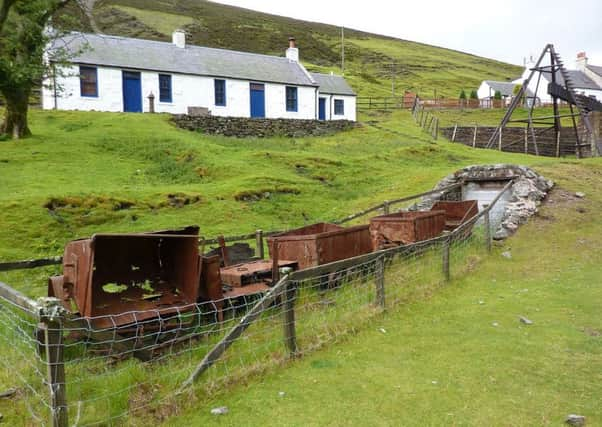Scotland's highest village: Wanlockhead


The tiny settlement of Wanlockhead, 1456 feet (410m) above sea level in the Dumfries and Galloway hills became a destination for those hoping to strike it lucky in the mineral-rich Lowthers, where mining would become an integral part of life in the village for centuries.
The discovery of the prized metal in the hills triggered a mini “gold-rush” in the area in the mid-17th century. Groups of miners flocked to the village during the summer months with an abundance of strikingly pure gold mined there for several years.
Advertisement
Hide AdAdvertisement
Hide AdSome of the mineral discovered was of such high quality - pieces were measured as high as 22.8 carats - that they were chosen to repair the Scottish crown last worn by Charles II in his coronation at Scone in 1651.
The Duke of Buccleuch built the first permanent mining settlement in the area in 1680, including a lead smelting plant and a number of miners cottages.
In addition zinc, copper and silver were also discovered in the area, with the lead mining industry dominating Wanlockhead’s economic landscape - as well as it’s natural one - right up until the mid 1950s, when the last working mine ceased production.
The mystique surrounding the village proved enough to attract one of Scotland’s most famous sons in the late 18th century. Rabbie Burns paid two separate visits to Wanlockhead in the space if three years.
Along with a friend, Thomas Sloan, Burns arrived in the village in winter 1789. However, The coarse, frozen landscape made it difficult to travel, forcing the pair to have their horses’ shoes ‘frosted’ - a process in which the shoes are sharpened in order to increase grip.
But, after failing to persuade a local Farrier to do the job, the pair were forced to seek refuge inside Ramage’s Inn, where Burns penned the poem “Pegasus at Wanlockhead,” an ode to Burns’ horse, Pegasus.
He returned in 1792, alongside fellow poet Maria Riddell, allegedly intrigued by the mines and interested in exploring them himself. Despite getting deep inside, the pair were forced to come back when Burns became unwell due to the poor air quality.
Advertisement
Hide AdAdvertisement
Hide AdToday, the tiny community of less than 200 people live amongst reminders of their mining past, with disused lead mines and a beam engine built in the 19th century - and still in full working order - visible in the middle of the village.
With its past as an industrial hub, the site of a mini gold-rush and connections to Burns, Wanlockhead surely remains one of Scotland’s best kept secrets.